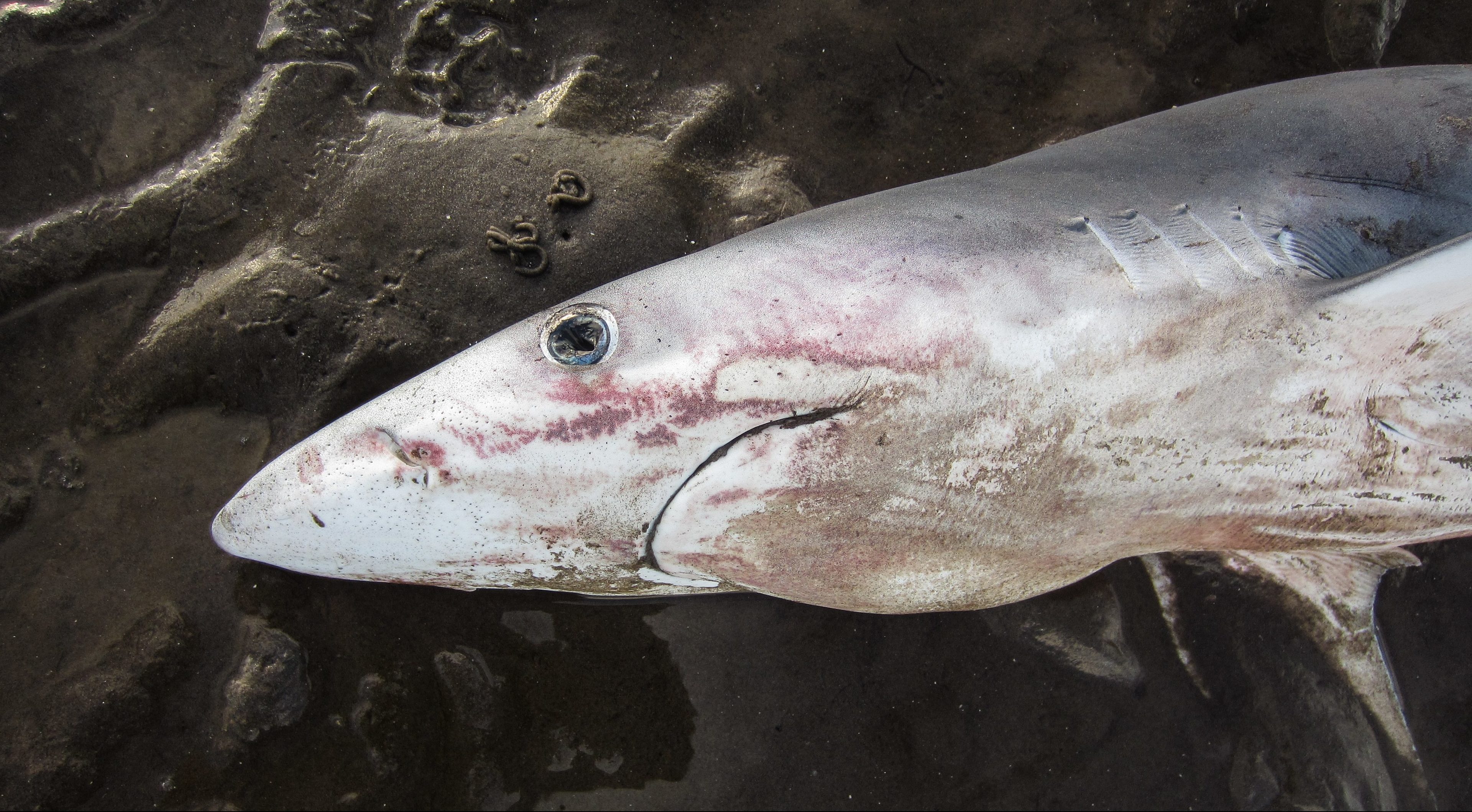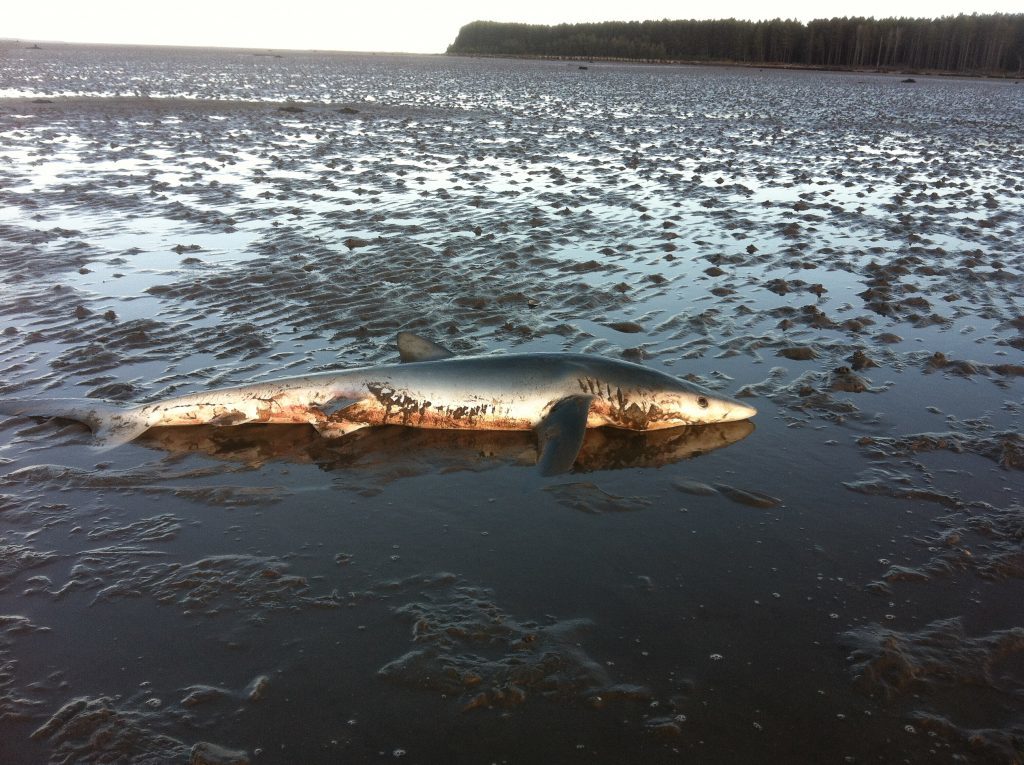A species of shark seldom seen in this part of the world has been discovered washed up on a Fife beach — although experts have insisted there is no cause for alarm.
The carcass of what is believed to be a blue shark, measuring around five feet long, was discovered by a passer-by walking his dog on Tentsmuir Beach on Monday and has prompted interest from scientists from the Scottish Marine Animal Stranding Scheme (SMASS), who are keen to find out how the predator came to be there.
Blue sharks, which mainly feed on schools of fish including anchovies, sardines, herring and squid, normally inhabit deep water in tropical, subtropical and temperate seas across the world but are very rarely found near shorelines.
Dr Andrew Brownlow, from the Scottish Marine Animal Stranding Scheme, said the discovery was usually outwith the project’s remit, but said scientists would be trying to recover the shark’s body to find out more.
“It is not unusual to see these species around our coasts, although it is a deep water species which occasionally comes close to shore,” he explained.
“The Scottish Marine Animal Stranding Scheme investigates cetaceans, seals, turtles and basking shark and as such we do not have remit or funding to investigate other shark species, however we are going to see if we can get this recovered to see if we can learn a little more about what happened.
“It is possible the animal live stranded, where it swam onto the beach alive and died (unusual as that may sound, this behaviour has been observed elsewhere), or it could be ill or have been a victim of bycatch.”
Between 10 and 20 million blue sharks are thought to be killed due to human capture worldwide each year, with its skin used for leather, fins used for shark fin soup and the liver for oil — mainly in Asia.
Experts say the blue shark is non-aggressive to humans, although it has been known to attack as a result of feeling threatened.
However, Dr Brownlow stressed that Fifers should have little to worry about.
He concluded: “The key message is that sharks have much more to fear from humans than the other way around, and you certainly don’t have Jaws in the Tay!”
Shark sightings in the Tay and Firth of Forth are few and far between, but they do happen.
Last summer, a fisherman near St Monans spotted a large basking shark, which normally visit the west coast of Scotland and are rarely seen on the east coast.
And a tope shark was spotted in near Methil Pier back in 2012 by a man out fishing for mackerel.
The latest spot in Fife comes just two months after a nine-foot blue shark, the second largest ever caught off the coast of Britain, was captured 20 miles off the Welsh coast by an amateur fisherman.
In recent years, the blue shark’s numbers have declined by as much as 60% and their conservation status is now “near threatened”.











